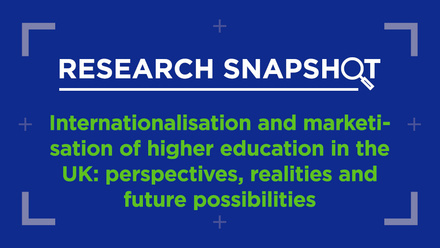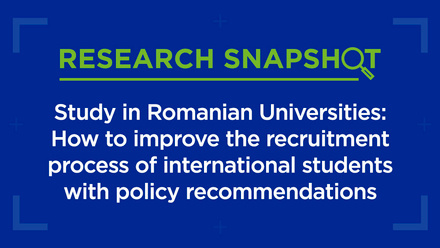Cracking the Gen-Z code: Mastering digital engagement in eight seconds

For institutions that are looking to increase their visibility and connection to students, it is imperative to engage students throughout their journey, from the discovery stage to enrolment (and beyond!). But how can we create these meaningful connections in today’s competitive landscape, where 85% of students consider multiple institutions — and 44% even pay deposits to more than one? The answer is deceptively simple: by mastering digital engagement and speaking to students where they live, online.
This blog will explain how you can use digital strategies to reach Gen-Z effectively. With 48% of students saying very few or no institutions keep them engaged, we’ll break down what it takes to win over this audience — and keep their attention.
Who are Gen-Z, and why do they matter?
Born between 1995 and 2012, after the World Wide Web was released into the public domain in 1993, Gen-Z is the first generation to grow up fully immersed in the digital world. They’re online an average of 6 hours a day and have developed sharp information-filtering skills to navigate the constant flood of content. What some call a ‘short attention span’ is actually their ability to scan and judge information in just seconds. That means you’ve got 3.5 seconds to catch their eye and 8 seconds to convince them to stay.
And it’s not just any content that will do. For 44% of students, ‘cringey’ marketing is a dealbreaker — they won’t even consider a university that they deem as out of touch. On top of that, 68% care about an institution’s values, and 47% expect every single piece of outreach to be personalised to them, or they will not engage. And without engagement, your institution's online efforts yield minimal results.
Mapping the Gen-Z digital recruitment journey
To successfully connect with Gen-Z, institutions need a multi-channel strategy, with each platform tailored to different stages of the recruitment funnel. This includes social media, SEO, paid ads and email — all tools that can be optimised to engage students in the right way at the right moment.
Having a clear objective will not only help you create a relevant message, but it will also make it possible to evaluate whether your action was a success and what can be adjusted in the future.
Start by defining clear objectives — whether it’s driving applications, boosting enrolments or increasing brand awareness. This will help you understand exactly what message you need to get out there, whether the aim is to get potential students to remember your brand; read more about your programmes; apply to your institution; or stay in touch with your admission office, ensuring they end up enrolling. Then, match your message to your goal. Instagram stories or TikTok videos are perfect for showing off campus life and student experiences, LinkedIn is a powerful tool for promoting professional or graduate programmes, while Google Ads can target high-intent keywords related to specific programmes or application deadlines. Having a clear objective will not only help you create a relevant message and use the best fitting platform for this message, but it will also make it possible to evaluate whether your action was a success and what can be adjusted in the future. Without knowing your desired result, you cannot know if your campaign was a success.
Next, determine a budget that you can allocate to the specific campaign. Different platforms not only have different prices, but different ways of pricing: you need to know if you are paying for, for example, clicks (to your website or dedicated landing page), for leads (actual students leaving their contact information for you), for impressions (when the banner was seen by a potential student), etc. These are all steps towards enrolments, so it is essential to monitor how all these clicks and leads convert (meaning how many of them become applications, admissions and enrolments). Tracking these allows you to measure your actual ROI = cost per acquisition (enrolment). For example, sometimes you pay €3000 for 100 leads and end up gaining only one enrolment, while in other cases you might have paid €5000 for 1000 clicks to your landing page, resulting in 80 leads and converting to 10 enrolments. In the first case that one enrolment cost you €3000, while, in the second, one enrolment cost €500. Knowing this will help you make the most from your investment.
Once your strategy is in place, you can shift your focus towards the messaging.
Gen-Z values transparency and realness, so let your current students tell their stories. User-generated content like testimonials or ‘day-in-the-life' videos provide a genuine glimpse into what campus life is really like.
Seven tips for devising your messaging:
1. Start with a bang
Gen-Z has no patience for slow burns. Use of compelling visuals, bold colours, catchy headlines and hashtags is advised to instantly grab their attention. For example, an eye-popping campus shot or student success story can do wonders on Facebook and Instagram.
2. Keep it short
In a world where TikTok reigns supreme, brevity is key. Videos should be quick (ideally under 15 seconds) and texts should be easily scannable — think bullet points, snappy sentences, and direct subheadings. Highlight key points like campus life, research opportunities, or job placement stats, then guide students swiftly to a clear call to action (CTA).
3. Follow the trends, but stay authentic
Gen-Z is highly attuned to the latest trends and memes. Participate in popular challenges, use relevant memes and hashtags, but ensure it feels authentic to your university's brand. Show, don’t tell. Gen-Z values transparency and realness, so let your current students tell their stories. User-generated content like testimonials or ‘day-in-the-life' videos provide a genuine glimpse into what campus life is really like. One in five students feels underrepresented in university marketing, so giving voice to real student experiences is crucial to helping prospective students picture themselves on your campus.
4. Incorporate interactive elements
Interactive content is a game-changer. Polls, quizzes, and virtual campus tours aren’t just fun — they’re highly engaging. They give prospective students a chance to explore and connect on a deeper level. And when 77% of students say that connecting with fellow incoming students helps build confidence, creating opportunities for them to interact is invaluable.
5. A/B testing and optimised keywords
Not all digital strategies work equally, so testing is essential. Test various elements such as different headlines or descriptions, different images or videos, and different Calls to Action, or CTA’s. It’s also crucial to test different keyword combinations in paid ads. There isn’t necessarily a good or bad list of keywords. As different users have different search intents, the effectiveness of an ad could differ a lot. For example, one user could look for 'best university in Germany', while another user could look for 'Biochemistry in Swedish university'. Both searches trigger the ads with the word ‘university’, but the performance will differ. The more aligned your ad is with a student’s search intent, the more effective it will be.
6. Optimise for mobile
With Gen-Z spending so much time on their phones, ensuring your content is mobile-friendly is non-negotiable. Fast load times, responsive designs, and intuitive navigation are key to keeping (prospective) students engaged. Whether they’re interacting with your website or scrolling through your social media, their experience needs to be seamless.
7. Call to action: Be clear and compelling
Gen-Z is all about authenticity, inclusivity, and excitement. Your CTA must be bold and inviting, whether it’s encouraging students to apply, schedule a campus visit, or follow your social media channels. It is equally important to test (on multiple browsers!) that the next step is easy to follow, with no confusing detours or dead ends. The journey should feel as smooth as it is engaging.
Nurturing the Gen-Z journey beyond application and admission
After initial engagement, your website becomes a key communication tool. Gen-Z prioritises quality education, career prospects, scholarships, fees, language requirements and programme reputation, so ensure this information is clear and concise.
Once the choice is made, the application process starts. To ensure Gen-Z will complete this step use bullet points, checklists, visualisations and video instructions instead of long complicated instructions for this process.
The recruitment funnel doesn’t end once a student applies. With nearly half of students applying to multiple schools and 48% saying institutions aren’t doing enough to keep them engaged, staying on their radar is critical. Support in this stage can be done through emails and chat tools. Focus on both practicalities (visa, housing, travel) and emotional engagement (student life, connecting with peers). And given that 45% of students gain confidence from connecting with fellow incoming students, consider leveraging student ambassadors or peer-to-peer tools. These interactions help build excitement and make your institution feel like home.
Conclusion: Stand out or be scrolled past
Engaging Gen-Z effectively requires a strategic approach that aligns with their fast-paced, digital-first lifestyles. By staying ahead of trends, optimising for mobile, and creating interactive, authentic content, you’ll position your institution to thrive in an increasingly competitive market.
The window is small, but the opportunity is vast. Are you ready to make your digital strategy count?






